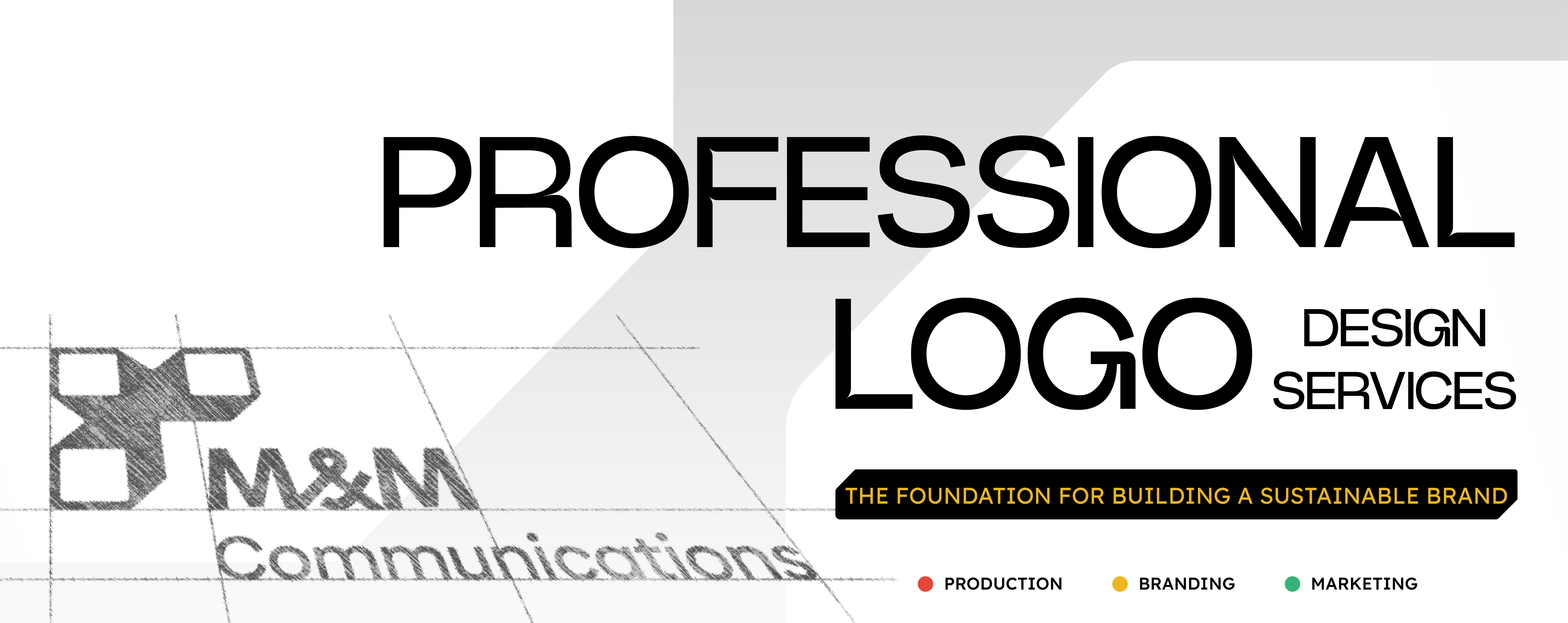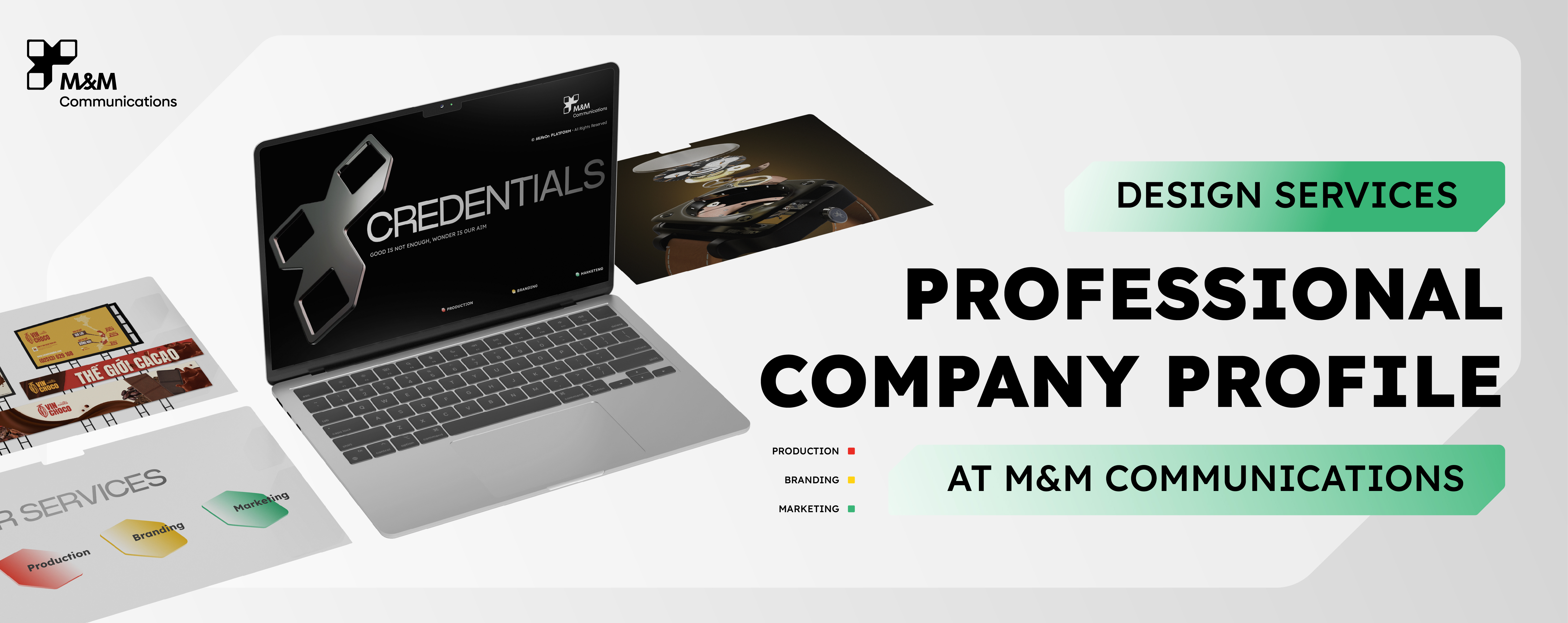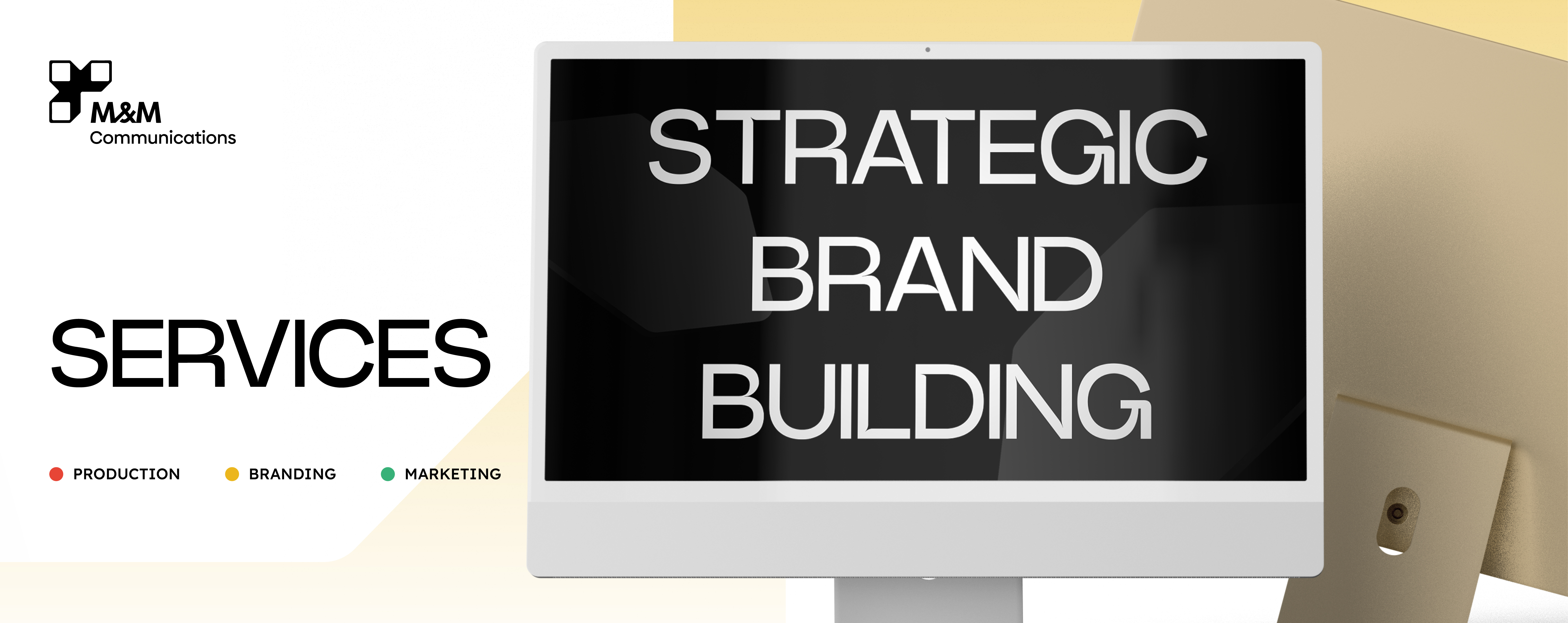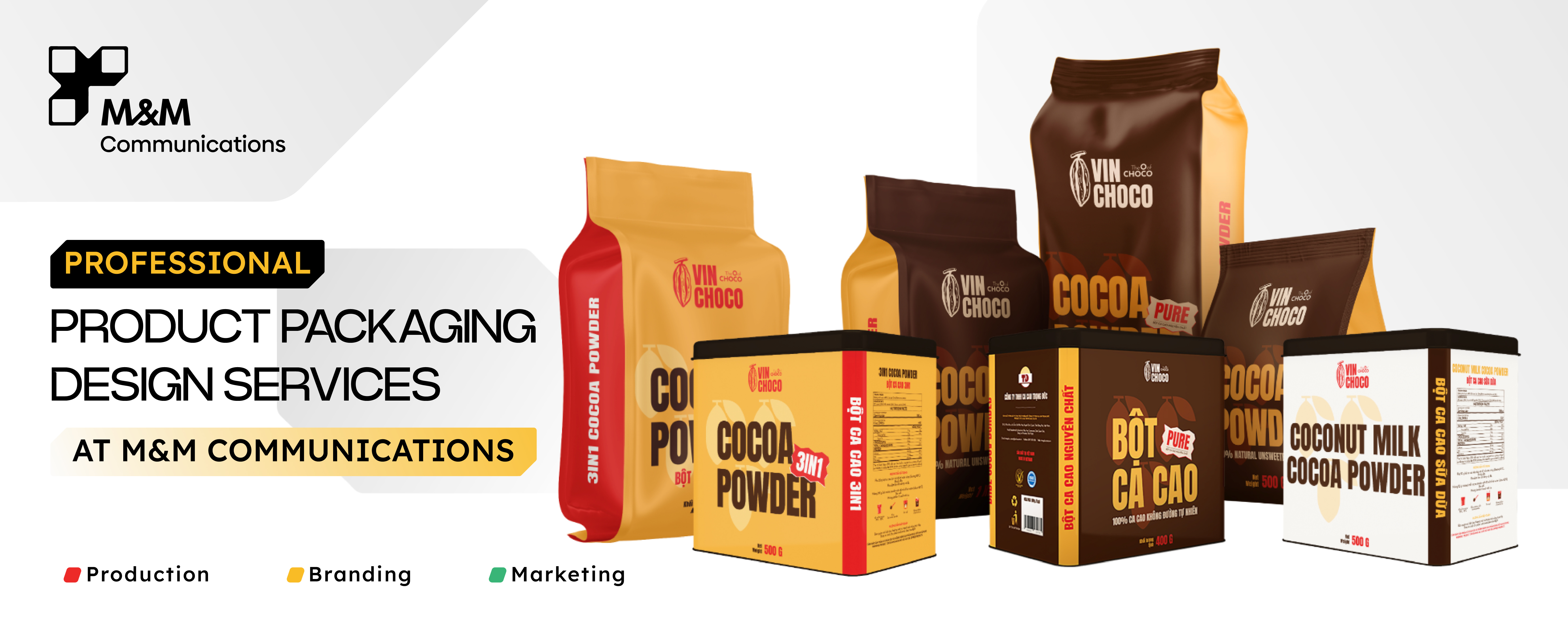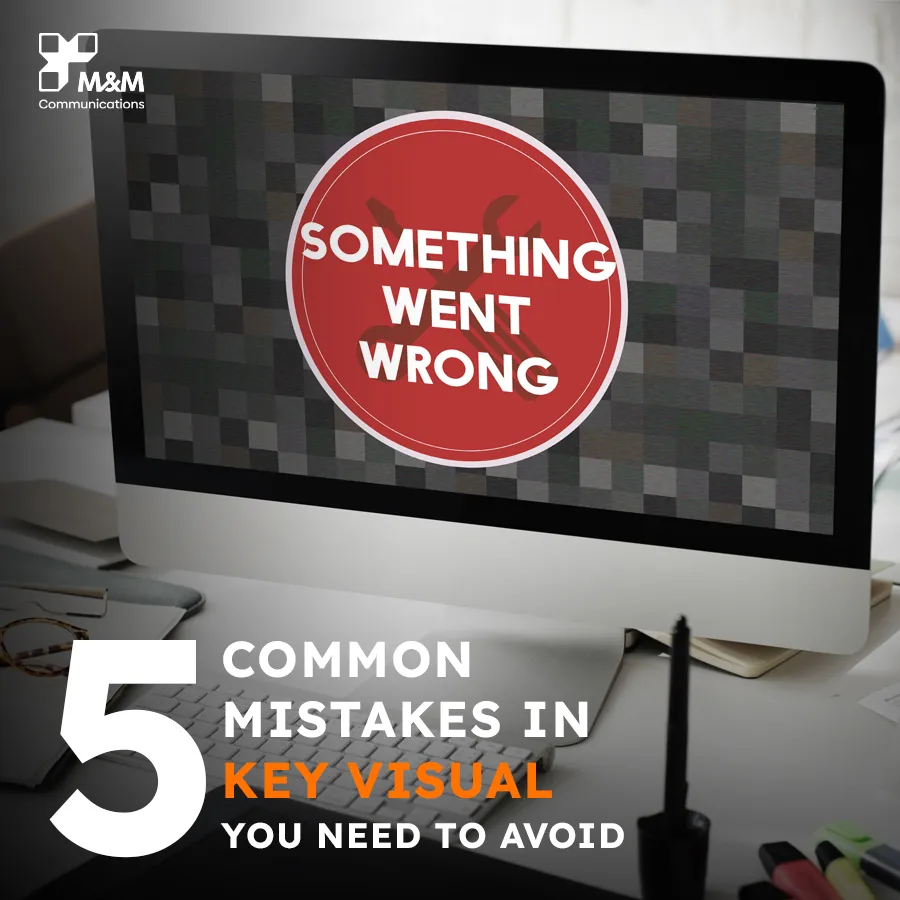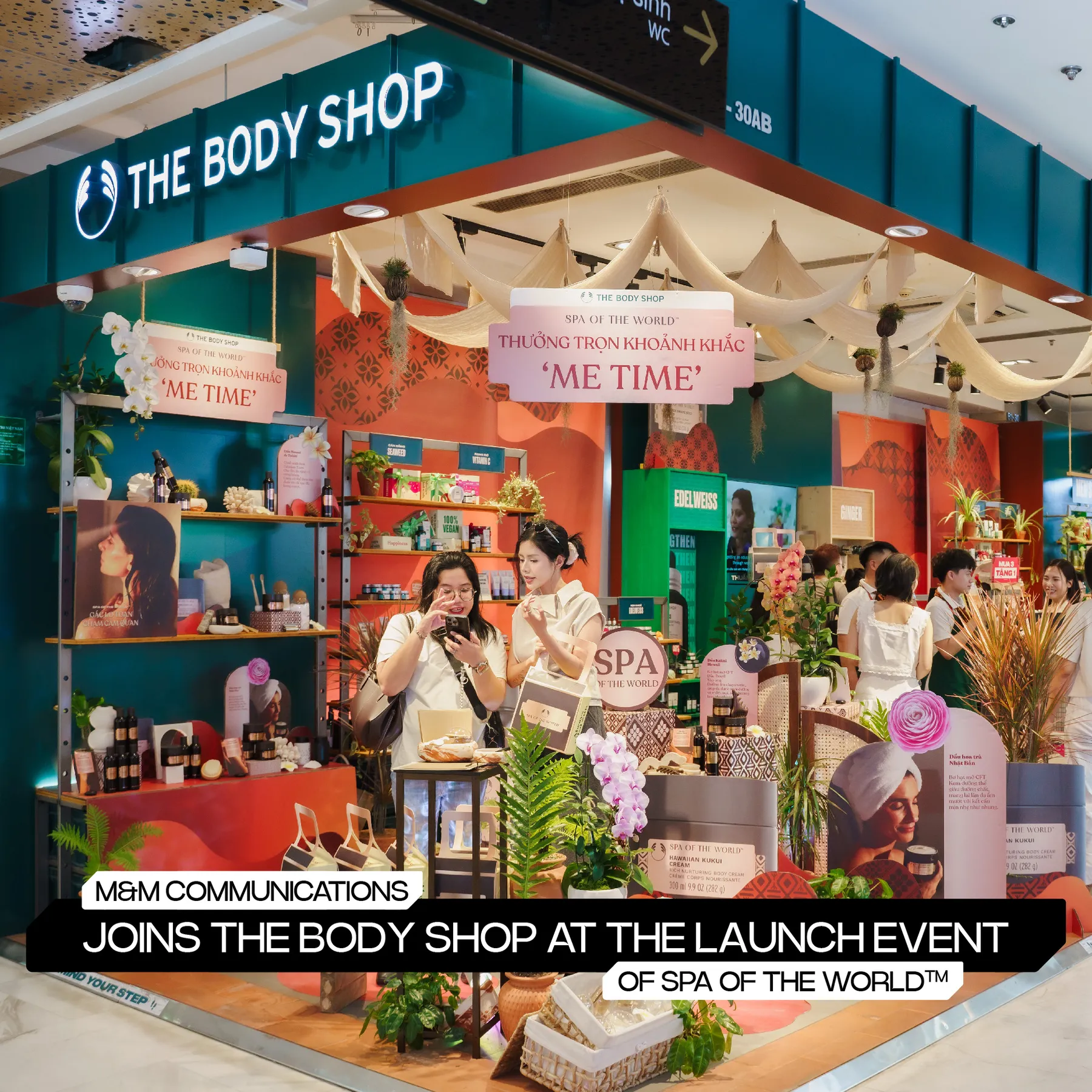
Brand Identity Design 2025: Crafting a Comprehensive and Cohesive Visual System

1. The Power of a Unified Brand Identity
In the bustling marketplace of Vietnam, a distinctive and consistent brand identity is crucial for recognition, differentiation, and building trust. It's the comprehensive visual and verbal expression of your brand, shaping perceptions and creating memorable experiences. A well-defined brand identity system ensures that every customer touchpoint consistently communicates your brand's personality, values, and promise.
Why a comprehensive brand identity system is essential:
- Builds Recognition: Consistent visuals make your brand instantly familiar.
- Creates Differentiation: A unique identity helps you stand out from competitors in the Vietnamese market.
- Fosters Trust and Credibility: Professional and cohesive branding signals reliability.
- Communicates Values: Visually expresses what your brand stands for.
- Enhances Customer Loyalty: A strong, relatable identity builds emotional connections.
- Supports Marketing Efforts: Provides a consistent foundation for all marketing communications.
2. Core Components of a Brand Identity System
A brand identity is a collection of interconnected elements that work together.
2.1. Logo Suite
- Primary Logo: The main version of your logo.
- Secondary Logos/Variations: Horizontal, vertical, stacked versions for different applications.
- Submarks/Icons: Simplified elements of the logo for use as favicons, social media profile pictures, or app icons.
2.2. Color Palette
- Primary Colors: The main brand colors that are used most frequently.
- Secondary Colors: Accent colors used to complement or highlight.
- Neutral Colors: For backgrounds and text (e.g., white, black, grays).
- Color Codes: HEX, RGB, CMYK, Pantone values for consistency across digital and print, important for Vietnamese print production.
2.3. Typography System
- Primary Typeface(s): For headlines and main body text.
- Secondary Typeface(s): For subheadings, captions, or accents.
- Font Weights and Styles: Defining usage for bold, italic, regular, etc.
- Hierarchy and Sizing: Guidelines for typographic scale and readability. Consider Vietnamese character legibility.
2.4. Imagery Style
- Photography Guidelines: Style, subject matter, tone, and color treatment of brand photos.
- Illustration Style: Guidelines for custom illustrations, if applicable.
- Iconography: A consistent set of icons for use in UI and communications.
2.5. Brand Voice and Tone
While not strictly visual, the brand's communication style is integral to its identity. Guidelines on language, tone (e.g., formal, friendly, witty), and messaging, tailored for Vietnamese audiences.
2.6. Supporting Visual Elements (Optional)
- Patterns and Textures: Background elements that add depth and personality.
- Brand Mascot or Character: If applicable.
- Layout Grids and Composition Rules: For consistent application design.

3. Developing a Cohesive Visual System
Creating a visual system involves strategic thinking and creative execution to ensure all elements work harmoniously.
3.1. Brand Discovery and Strategy
Before design, a deep dive into the brand's mission, vision, values, target audience in Vietnam, and competitive landscape is crucial. This informs all design decisions.
3.2. Mood Boarding and Conceptualization
Creating visual collections (mood boards) of images, colors, textures, and typography to define the desired aesthetic direction and explore concepts.
3.3. Iterative Design Process
Designing and refining each component (logo, color, type) while considering how they interact. Testing combinations to ensure visual harmony and versatility.
3.4. Application Mockups
Visualizing how the brand identity will look across various touchpoints (website, social media, packaging, business cards relevant to the Vietnamese context).
4. Creating Comprehensive Brand Guidelines
Brand guidelines (also known as a brand book or style guide) are the rulebook for how to use your brand identity elements correctly and consistently.
4.1. Key Sections of Brand Guidelines
- Brand Introduction: Mission, vision, values, personality.
- Logo Usage: Clear space, minimum size, color variations, incorrect usage examples.
- Color Palette: Primary, secondary, neutral colors with their codes.
- Typography: Typefaces, weights, styles, hierarchy, and usage examples.
- Imagery Style: Guidelines for photography and illustration.
- Brand Voice and Tone: Communication style and messaging pillars.
- Application Examples: Showing correct usage on various mockups (e.g., Vietnamese social media posts, local advertisements).
4.2. Importance of Brand Guidelines
- Ensures Consistency: Critical for building brand recognition.
- Empowers Internal Teams & External Partners: Provides clear direction for everyone working with the brand.
- Protects Brand Integrity: Prevents misuse or misrepresentation of the brand.
- Saves Time and Resources: Reduces guesswork and revisions.
5. Maintaining Brand Consistency Across All Touchpoints
Consistency is the cornerstone of a strong brand identity. This means ensuring your brand looks, feels, and sounds the same everywhere your Vietnamese customers interact with it.
5.1. Digital Touchpoints
- Website and Mobile App: Consistent UI/UX, visuals, and messaging.
- Social Media Profiles & Posts: Consistent profile pictures, cover photos, post templates, and tone of voice on platforms popular in Vietnam (e.g., Facebook, Zalo, TikTok, Instagram).
- Email Marketing: Branded email templates.
- Online Advertising: Consistent visuals and messaging in digital ads.
5.2. Physical Touchpoints
- Packaging: Consistent branding on product packaging.
- Print Collateral: Business cards, brochures, letterheads.
- Signage: Storefronts and physical location branding.
- Presentations & Sales Materials: Branded templates.
5.3. Strategies for Ensuring Consistency
- Centralized Brand Assets: Easy access to approved logos, fonts, and templates.
- Brand Training: Educating employees and partners on brand guidelines.
- Regular Brand Audits: Reviewing all touchpoints for consistency.
- Brand Champions/Managers: Individuals responsible for upholding brand standards.

6. Adapting Brand Identity for the Vietnamese Market
While global consistency is important, nuances for the Vietnamese market should be considered.
- Language: Ensuring typography and layouts work well with Vietnamese characters.
- Color Symbolism: Being aware of cultural meanings of colors in Vietnam.
- Imagery: Using visuals that resonate with Vietnamese audiences and reflect local culture appropriately.
- Local Platforms: Adapting visual assets for popular Vietnamese social media and e-commerce platforms.
7. Tools for Managing Brand Identity Assets
- Digital Asset Management (DAM) Systems: For storing and distributing brand assets (e.g., Bynder, Brandfolder).
- Cloud Storage: Google Drive, Dropbox for smaller teams.
- Brand Guideline Platforms: Online tools for creating and sharing interactive brand guidelines (e.g., Frontify, Lingo).
- Design Software Libraries: Creating shared libraries in Figma, Sketch, or Adobe CC.
8. Case Study: Building a Comprehensive Brand Identity for a Vietnamese F&B Chain (Hypothetical)
Client: A new chain of modern Vietnamese cafes expanding rapidly.
Challenge: Needed a strong, consistent brand identity to differentiate from traditional cafes and support franchise growth.
Solution by M&M Communications: Developed a complete brand identity system including a versatile logo suite, a warm and inviting color palette reflecting Vietnamese coffee culture, bilingual typography, and photography guidelines showcasing fresh ingredients and a modern cafe atmosphere. Created comprehensive brand guidelines for internal staff and franchisees.
Results: Strong brand recognition across all new locations, consistent customer experience, positive reception for its modern yet authentic Vietnamese feel, and streamlined onboarding for new franchisees.
9. The Evolution of Brand Identity: Dynamic and Living Systems
Brand identities are no longer static. Modern brand systems are designed to be flexible and adaptable to evolving market needs and digital platforms, especially in a fast-paced market like Vietnam. Consider periodic reviews and refreshes to ensure continued relevance.
10. Conclusion: Your Brand Identity is Your Visual Bedrock
A comprehensive and consistently applied brand identity system is a powerful asset for any Vietnamese business. It's the visual and verbal foundation that builds recognition, trust, and loyalty. By thoughtfully developing each component, creating clear guidelines, and diligently maintaining consistency, you can create a brand that not only stands out but also endures.
M&M Communications specializes in crafting holistic brand identity systems that resonate with Vietnamese audiences and drive business success. Contact us to build or refine your brand's unique visual language.
